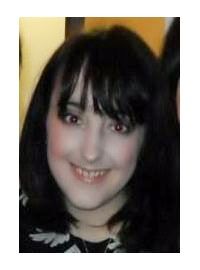Working as a Media and Publications Assistant with Dr Janina Ramirez
Posted on 11 June 2015

Harriet Beadnell
MA in Public History, 2014/5
When I embarked upon the MA in Public History at the University of York, I really wanted to discover how historians can share their research with both an academic and a public audience. During my placement, I gained the chance to work with Dr Janina Ramirez to see how historians are able to translate their work to a wide audience in a variety of ways including via television and by writing books aimed at a broader audience.
I spent a great deal of time proofreading Janina Ramirez’s latest book, The Private Lives of Saints, and checking the spelling and grammar and making comments on sections that I particularly enjoyed and the reasons why. I observed closely how academic history can be translated to a broader audience by writing in a more narrative style, telling the history of Medieval religion through particular people (in this case Saints) and making reference to modern day equivalents to entice readers. Yet, academic legitimacy is still crucial to Janina Ramirez’s work, with historiography and sources fully referenced and printed.
The proofreading of the book enabled me to gain organisational, editing and close reading skills, which will be valuable in a variety of contexts. As the work was conducted from university, the placement tested my ability to organise my time effectively. The part I enjoyed most about proofreading was viewing the process of popular history writing first-hand. It was truly fascinating to uncover how a historian can balance writing academically sound history with a narrative that is accessible and entertaining.
As part of the placement, I also got to view the making of Janina Ramirez’s latest TV programme called The Quizeum. I really enjoyed learning about television history from another angle. Having had previous experience working as an assistant researcher on a documentary programme, I enjoyed observing the making of TV History from the perspective of the expert and presenter. It highlighted the diverse role of the public historian, in being required to present facts and research effectively and engagingly whilst working with a production team. I also helped to promote Janina Ramirez’s other documentary programme called Saints and Sinners – A Millennium of Monasteries. I wrote an interview with questions that Janina answered and I used this to promote her work via Twitter. This experience gave me valuable skills in writing in a journalistic style, by thinking of suitable questions and an overview which would be promotional in an accessible way. This task demonstrated the complex role of the public historian, who must hold a place in the public eye whilst retaining academic authority.
I thoroughly enjoyed the placement. It was wonderful to observe the dual role of a historian such as Dr Janina Ramirez, whose enthusiasm and passion for public history and teaching is inspirational. As I continue my own academic journey, the placement has led me to think about historians and their audiences and how I might one day choose to share my own future research.
